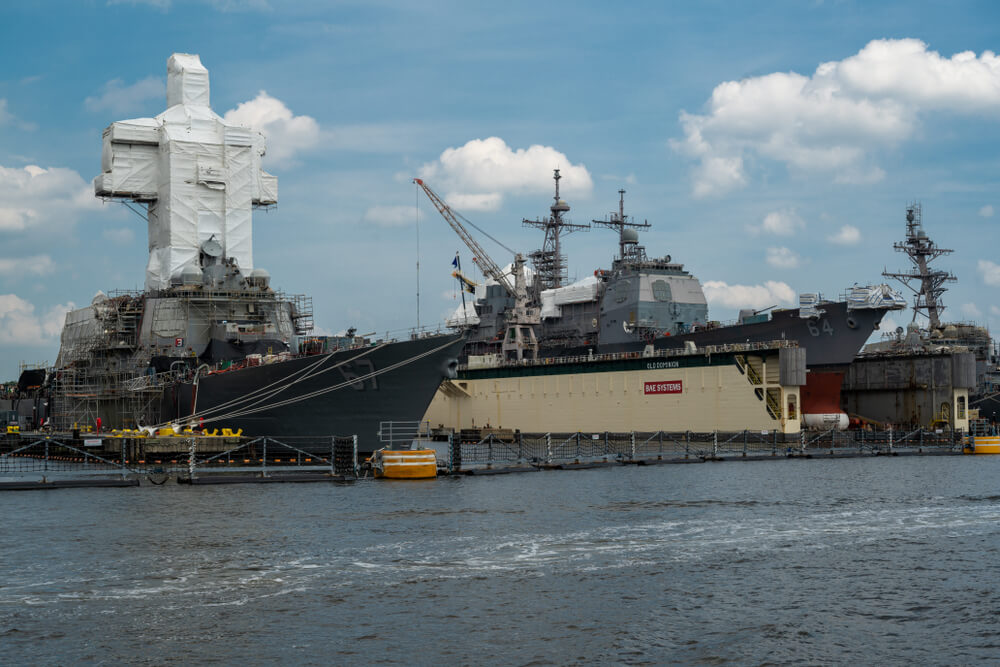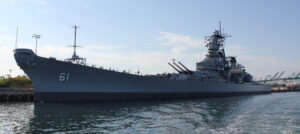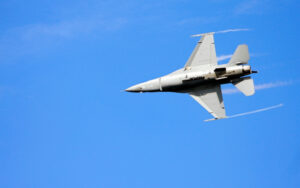The U.S. Navy’s goal of “75 ready ships” remains a “work in progress” after two years of effort, said Vice Adm. Brendan McClain, the commander of the Naval Surface Force Pacific and the most senior operational surface warfare officer in the Navy.
The Navy has a readiness goal of ensuring 75 combat-credible surface ships at any given time. But this is a difficult goal to meet as the fleet is a shrinking, aging force whose deployed units are regularly extended to support ongoing deterrence operations. Those extensions in turn upset carefully planned shipyard work packages for multiple ships.
The Navy response so far has been very tactical, swarming the problem at hand with as many resources as possible to get a ship deployed, a process that often “robs Peter to pay Paul,” and perpetuates crisis planning. More ships that would ease the rotational deployment cycle for the fleet, or shorter periods deployed to fewer locations and without extensions, are unlikely for the immediate future.
So, what can the Navy do to make readiness planning and sustainment more robust in the face of ongoing operational challenges?
The Navy’s more diverse ecosystem of maintenance has seen its shipboard, tender-based and local-homeport components decimated since the end of the Cold War. Bringing back a maintenance and repair system at multiple levels might ease the burden on shipyard-level maintenance and repair.
Condition-based maintenance, a concept practiced by many U.S. allies, could help to reduce the overall maintenance workload, especially when armed with digital support from growing sensor networks on ships.
Finally, U.S. allies and partner nation shipyards build and maintain capable ships. As many have suggested, the U.S. should tap well-qualified overseas shipyards for maintenance and repair to ease the burden on the overworked, continental U.S. system.
The current outlook for improving overall U.S. Navy readiness ahead of possible great power conflict is grim, as a larger and more capable fleet is the real solution. In the meantime, however, improving the Navy’s organic maintenance capacity, embracing new concepts for maintaining ships and allowing trusted partners to join the readiness process can improve the readiness of existing ships.
Restore the Navy ecosystem of maintenance
Following the Cold War’s end, the tender and shore-based Navy maintenance components faced more draconian cuts than did operating forces. The Navy went from 18 destroyer and submarine tenders and repair ships to just two such vessels by the end of the 1990’s.
The Navy also decommissioned much of its intermediate maintenance structure over the 1990’s and early 2000’s.
And the Navy cut thousands of training instructors and pushed more training to virtual settings.
All of these changes, many made in the endless pursuit of cost saving without consideration as to the operational cost of such decisions, must be reviewed to evaluate the ability of the service to effective maintain its ongoing deployment cycle. Every minute of repair and maintenance time counts in a fleet where is always deployed and frequently subject to extensions that further complicate repair and maintenance planning.
Condition-Based Maintenance may help
Condition-based maintenance (CBM,) a “maintenance strategy that monitors the real-time condition of an asset to determine what maintenance needs to be performed, might be one way the Navy can reduce maintenance costs in the long term.
Hundreds of sensors connected to systems throughout a ship constantly monitor and conduct analysis of system parts including pumps, compressors, piping, and electrical systems. Not all equipment can be monitored in this way. Plus, there are substantial start-up costs and the unpredictability of when maintenance occurs could be problematic for the Navy budget system that is predicated on people, and not sensors, deciding when repair and maintenance take place.
The timelier repairs made through CBM however would likely promote long-term equipment health, safety and longevity for multiple shipboard systems and likely improve overall ship service life. The numbers of these sensors on ships are already growing to meet the potential of CBM.
The littoral combat ship’s small crew size demanded the ability to monitor more equipment remotely and some planning has been conducted to make it amenable to CBM. The new Constellation-class frigate design is set up to support CBM. Earlier designs like the Arleigh Burke-class DDG’s could have it backfitted and some exploration of that concept is now underway in Navy planning.
Collaborating with Trusted Allies in Ship Repair
The U.S. shares some of its most important naval systems, such as the Aegis combat system, with trusted allies. It can do the same with aspects of ship repair and maintenance when timeliness, geographic location and the availability of repair facilities are more important that returning the ship to the continental U.S. for the work.
The U.S. Navy has a long history with Japanese shipyard repair and maintenance firms due to the presence of the forward-deployed 7th Fleet in Yokosuka and Sasebo. The forward-deployed destroyers and other ships at Rota, Spain have also received excellent service from Spanish firms.
The U.S. could expand these agreements to Fincantieri (maker of the FREMM frigate that is the baseline of the FFG-62 design,) South Korean yards (which also produce Aegis ships) and AUKUS partners the United Kingdom and Australia. Many aspects of U.S. repair and maintenance may be different from these allied shipyards, but best practices could be exchanged in the process and help improve the readiness for all democratic nation navies, especially in the face of rising aggression from Russia and China.
The Navy must act now
Multiple reports and reviews since 2010 have served to loudly telegraph the declining readiness of the U.S. Navy..
Multiple solutions such as the Fleet Response Plan, the Optimized Fleet Response Plan and now the 75 Ready Ships Initiative have failed to stem falling readiness rates. If the Navy cannot expand in size, recruit more sailors, or reduce the burden of deployment on individual ships, then it must seek radical changes to how it does maintenance in order to better preserve the existing fleet.
The Navy’s maintenance strategy currently drives its operational readiness instead of having the operational requirements drive the maintenance strategy. To fix this, the Navy can remanufacture tenders from existing ships to service the fleet on its frontiers of service. It can implement CBM to promote longer equipment and ship service life. Trusted allied shipyards can repair U.S. ships when time, geography and yard availability matter.
The “get real, get better” slogan touted by the Navy demands no less.







